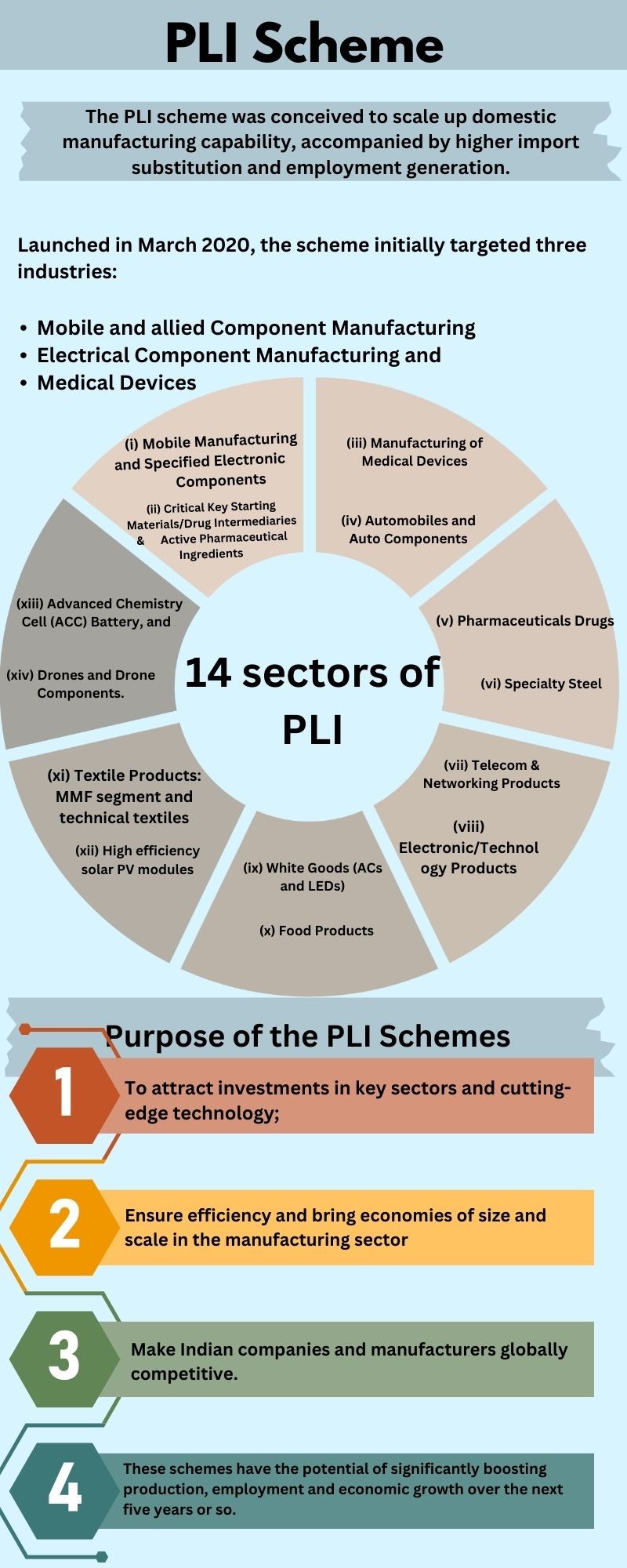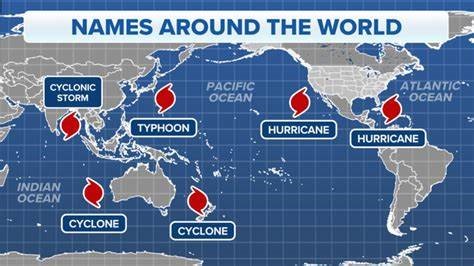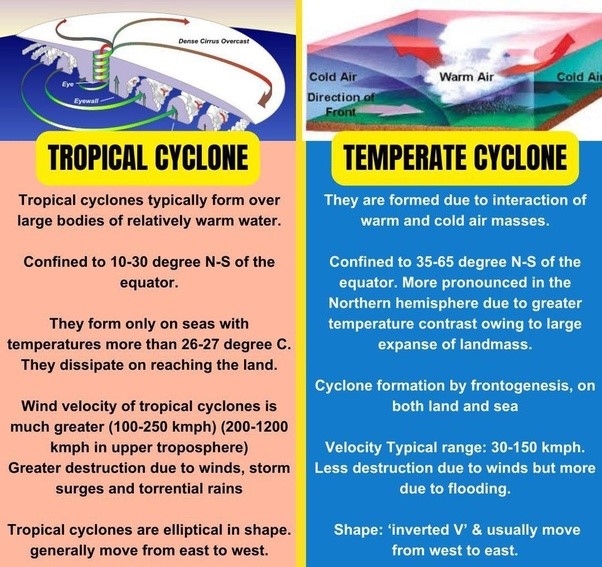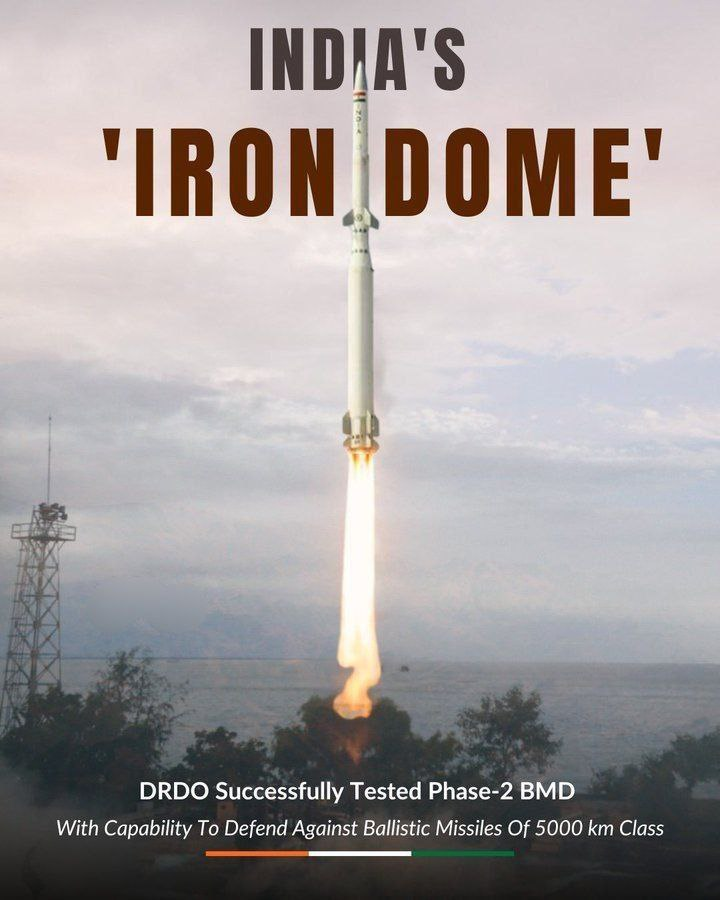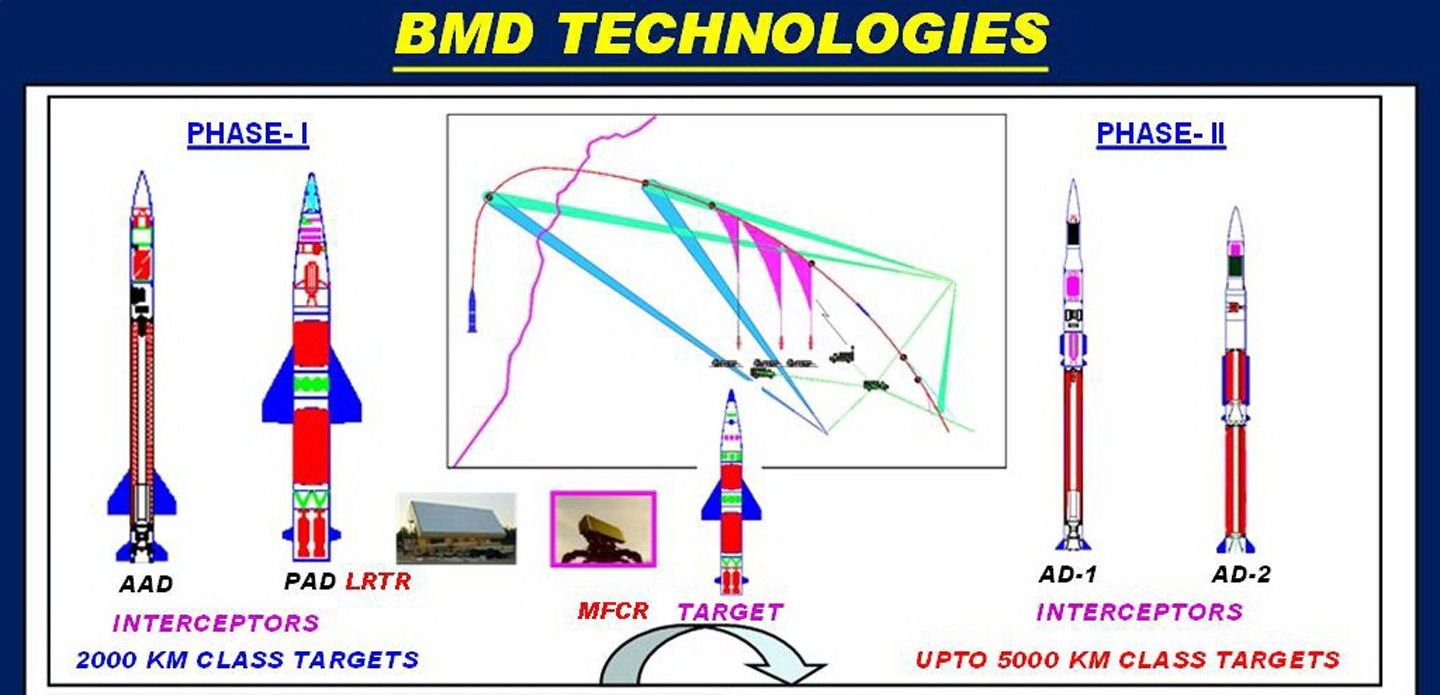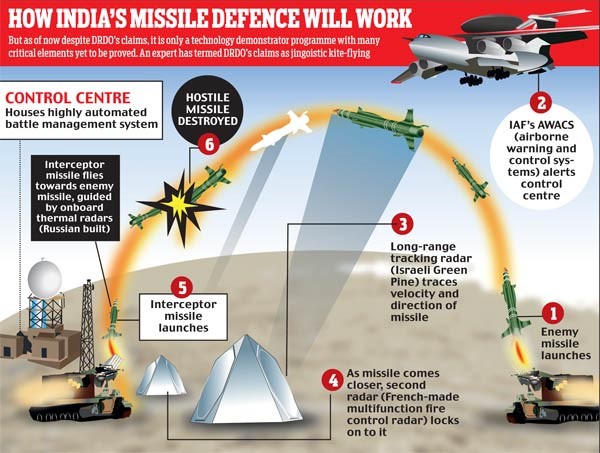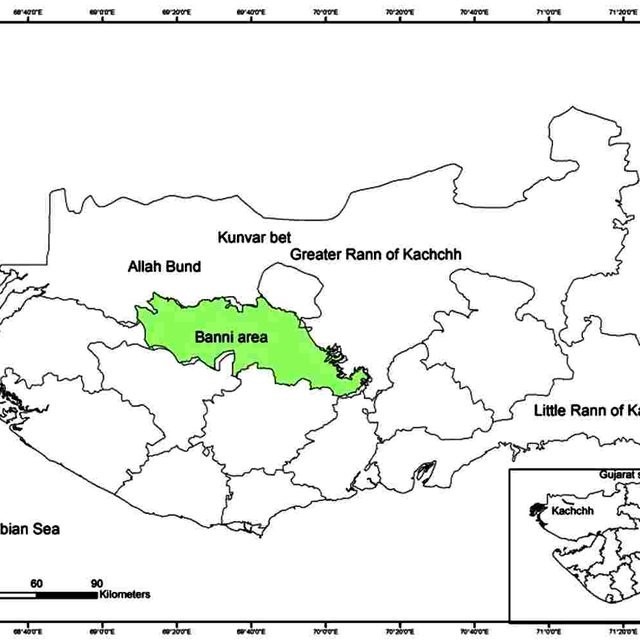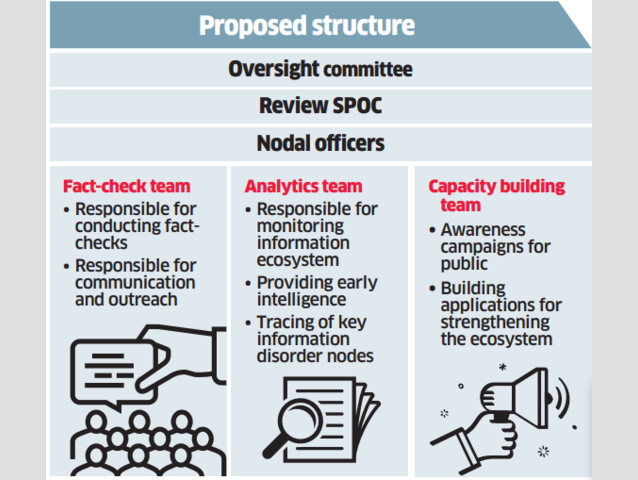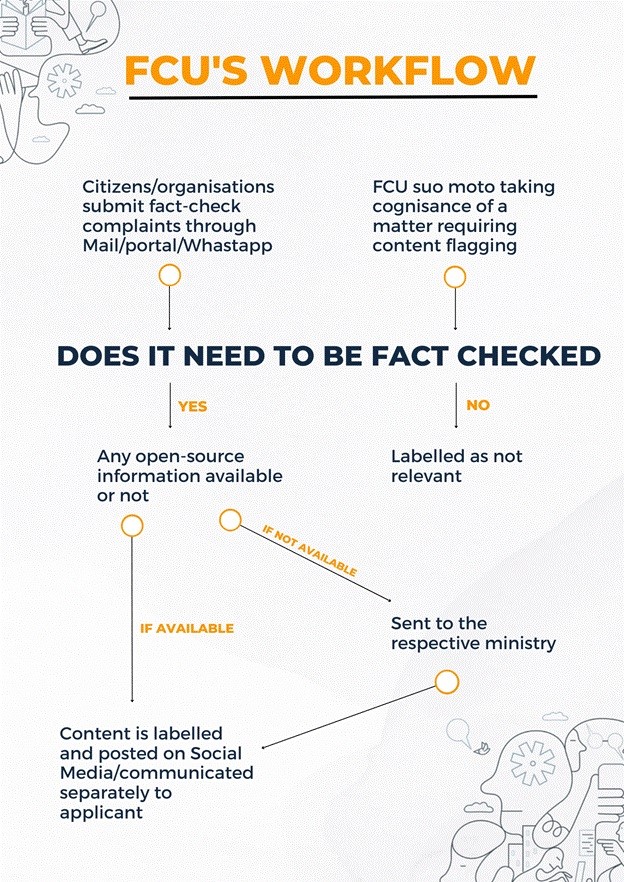1. PLI Scheme and Policy Shifts
Background
- Launched in 2020 as a flagship program under ‘Atmanirbhar Bharat Abhiyan’.
- Aim: To make India’s manufacturing sector globally competitive and create jobs.
- Focus sectors: Pharmaceuticals, electronics, auto components, semiconductors, EVs, and batteries.
- Offered large incentives to domestic and foreign investors for expanding domestic production.
- Discouraged Chinese investment due to security concerns.
Current Status and Challenges
- Government admits the scheme is floundering.
- No mention in the recent budget raises questions about its priority.
- Job creation target not met.
- Dependence on imports continues in key sectors.
Policy Shifts
- Budget 2024 proposes incentives for Chinese manufacturers to invest in India.
- Economic Survey advocates for increased FDI from China.
- Reduction in import duty on mobile phones indicates a shift towards greater competition.
Implications
- Potential dilution of ‘Atmanirbhar Bharat’ vision.
- Increased competition for domestic manufacturers.
- Need for a re-evaluation of the PLI scheme’s objectives and implementation.
2. Tropical Cyclone – Typhoon Gaemi
CONTEXT: Currently, Typhoon Gaemi has been making headlines. It recently struck Taiwan, causing significant damage and resulting in several fatalities123. The typhoon has also affected the Philippines, where an oil tanker capsized
Typhoons: An Overview
Definition
- Typhoon: A tropical cyclone occurring in the Northwestern Pacific Ocean, similar to hurricanes in the Atlantic and cyclones in the Indian Ocean.
Formation
- Warm Ocean Waters: Typhoons form over warm ocean waters (above 26.5°C).
- Rising Warm Air: Warm, moist air rises from the ocean surface.
- Condensation and Heat Release: The rising air cools and condenses, releasing heat and causing more air to rise.
- Low-Pressure Area: A low-pressure area forms at the surface, drawing in more air.
- Coriolis Effect: The Earth’s rotation causes the system to spin, leading to the formation of a typhoon.
Structure
- Eye: The calm centre of the storm.
- Eye wall: Surrounds the eye and contains the most severe weather.
- Rain bands: Spiral bands of clouds and thunderstorms extending outward from the eye
Categories
- Tropical Depression: Winds less than 61 km/h.
- Tropical Storm: Winds between 62-88 km/h.
- Severe Tropical Storm: Winds between 89-117 km/h.
- Typhoon: Winds between 118-149 km/h.
- Super Typhoon: Winds exceeding 150 km/h.
Impacts of Typhoons
- Strong Winds: Can cause structural damage and power outages.
- Heavy Rainfall: Leads to flooding and landslides.
- Storm Surges: Coastal flooding due to rising sea levels.
Preparedness and Safety Measures
- Stay Informed: Follow weather updates and warnings.
- Emergency Kit: Include essentials like water, food, and medications.
- Secure Your Home: Reinforce windows and doors, and remove outdoor items that could become projectiles.
- Evacuation: Follow local authorities’ instructions if evacuation is necessary.
Case Study: Typhoon Gaemi
- Recent Example: Typhoon Gaemi struck Taiwan and the Philippines, causing significant damage and fatalities.
- Impact: Severe weather conditions, including strong winds and heavy rainfall, led to widespread damage and disruption.
3. Phase-II Ballistic Missile Defence (BMD) System
CONTEXT: India successfully tested its Phase-II Ballistic Missile Defence (BMD) system, demonstrating its capability to defend against hostile missiles with a range of up to 5,000 km.
This is a significant advancement over Phase I BMD, which can intercept missiles with a range of 2,000 km.
- The system involves the use of ground-based radars to detect and track incoming missiles, followed by the launch of interceptor missiles to destroy them.
- The recent test validated the complete network-centric warfare weapon system.
Impact for India:
- Enhances India’s strategic deterrence capabilities by providing a robust defence against potential ballistic missile threats.
- Strengthens India’s position as a leading defence research and development nation.
- Boosts confidence in India’s ability to safeguard its territory and interests.
- Contributes to regional stability by deterring potential adversaries.
4. Cheetah from Africa: the next location for reintroduction
CONTEXT: Government estimates needing 10-12 adult cheetahs imported annually for the next five years to establish a sustainable breeding population.
- Release of all Kuno cheetahs into the wild expected in October 2024.
- Preparations for the next batch (from South Africa/Namibia) to begin after full release.
Project Cheetah:
Aims to reintroduce cheetahs to India after their extinction in the 1950s.
- Phase 1: 20 adult cheetahs brought from Africa (South Africa and Namibia) to Kuno National Park, Madhya Pradesh (September 2022).
- Current population: 26 (13 adults + 13 cubs).
- Maximum carrying capacity of Kuno National Park : 21 adults (limited by prey availability).
Banni Grasslands, Gujarat:
Potential future location for cheetahs under Project Cheetah.
The Banni Grasslands Reserve is an arid grassland ecosystem located on the outer southern edge of the Rann of Kutch in Gujarat, India. Here are some key points about it:
- Geography and Biodiversity:
- The Banni grasslands cover an area of approximately 3,847 square kilometers.
- They are known for their rich wildlife and biodiversity.
- The region is legally protected as a reserve forest.
- The word “Banni” comes from the Hindi word “banai,” meaning “made.”
- The land was formed from sediments deposited by the Indus Riverover thousands of years.
- The grasslands are home to various species, including nilgai, chinkara, blackbuck, wild boar, golden jackal, Indian hare, Indian wolf, caracal, Asiatic wildcat, and desert fox.
- Vegetation in Banni is sparse and depends on year-to-year variations in rainfall.It includes low-growing forbs, graminoids (many of which are halophiles), scattered trees (primarily Salvadora spp.), and the invasive Prosopis juliflora.
Advantages:
- Vast area (~3,500 sq km) – larger than Kuno and Gandhi Sagar.
- No leopard presence – reduces competition.
Disadvantages:
- Insufficient prey base (chinkara, blackbuck) for a viable cheetah population.
- Requires introduction of prey species like chital.
- Long-term planning needed for prey base development.
Gandhi Sagar Sanctuary, Madhya Pradesh:
Preferred location for the next batch of cheetahs. Considered a potential cheetah habitat for over a decade
Geography:
- Location: Gandhi Sagar Sanctuary is situated on the northern boundary of Mandsaur and Nimach districts in Madhya Pradesh, India.
- Area: It covers 368.62 km² and adjoins Rajasthan state.
- Terrain: The sanctuary features wooded hills, dry mixed deciduous forests, and flat grasslands around the Gandhi Sagar dam submergence.
- Chambal River: The Chambal River divides the sanctuary into western (Nimach district) and eastern (Mandsaur district) parts.
Flora:
- Tree Species: Key tree species include Khair (Acacia catechu), Salai, Kardhai, Dhawda, Tendu, and Palash.
- Savanna Ecosystem: The diverse savanna ecosystem is crucial for cheetah habitat.
Fauna:
- Deer Species: Easily sighted deer species include chinkara (Indian gazelle), Nilgai, and sambar.
- Other Animals: Indian leopard, langur, Indian wild dog, peacock, otter, and Mugger crocodile inhabit the sanctuary.
- Remember, Gandhi Sagar Sanctuary is also an Important Bird and Biodiversity Area.
5. India's Pursuit of a Permanent UNSC Seat
CONTEXT: Despite India’s efforts, there is no progress on UN Security Council exapansion.
Background
- UN Security Council (UNSC): The principal organ responsible for maintaining international peace and security.
- Permanent Five (P5): The five permanent members of the UNSC with veto power – US, UK, France, Russia, and China.
- India’s Aspiration: India seeks a permanent seat on the UNSC to reflect its growing global stature, economic power, and contributions to peacekeeping.
India’s Efforts
- G-4 Nations: India has formed a coalition with Brazil, Germany, and Japan (G-4) to advocate for permanent UNSC seats.
- Inter-Governmental Negotiations (IGN): India actively participates in the IGN process to reform the UNSC.
- Diplomatic Outreach: India engages in extensive bilateral and multilateral diplomacy to garner support for its bid.
- Public Diplomacy: India highlights its credentials as a responsible global power through initiatives like the International Solar Alliance and its contributions to UN peacekeeping.
Challenges
- P5 Resistance: The existing P5 members are reluctant to expand the council due to potential dilution of their veto power.
- Regional Competition: Competition from other aspiring countries for permanent seats.
- Lack of Consensus: The UN General Assembly has failed to reach a consensus on the issue of UNSC reform.
Recent Developments
- Stalled Progress: Despite consistent efforts, there has been little concrete progress in achieving UNSC expansion.
- Increased Transparency: The IGN process has become more transparent with live broadcasts and a digital repository.
- India’s Assertive Stance: India has adopted a more assertive stance, criticizing the UNSC’s outdated structure and calling for reforms.
Implications
- Multipolar World Order: India’s pursuit of a permanent UNSC seat reflects the changing dynamics of global power.
- Legitimacy and Effectiveness: A reformed UNSC with expanded representation would enhance its legitimacy and effectiveness.
- Global Leadership: India aims to play a more significant role in global governance and decision-making.
6. The Fact Check Unit
Issue: Constitutionality of the Information Technology (Intermediary Guidelines and Digital Media Ethics Code) Amendment Rules, 2023, which established a government fact-checking unit.
The case raises important questions about the balance between freedom of speech and the government’s role in regulating information.
Key Arguments:
Government:
- Right to correct information and not be misled is equally important as freedom of speech Article 19(1)(a)
- FCU is a tool to prevent the spread of false information and protect public interest.
- Government acts as an adjudicator and beneficiary in many instances, but its role here is limited to identification and highlighting misinformation.
- Right to be informed correctly is inherent in the right to life under Article 21.
Petitioners:
- FCU empowers the government to be prosecutor, judge, and executioner of truth, violating natural justice.
- Overbroad and vague rules create a chilling effect on freedom of speech.
- It is essential to promote media literacy education to empower individuals to evaluate information critically.
Background:
- The Information Technology Act, 2000, regulates the use of computers, communication devices, and the internet.
- The Information Technology (Intermediary Guidelines and Digital Media Ethics Code) Rules, 2021, were introduced to regulate social media intermediaries.
- The 2023 amendment introduced the government fact-checking unit.
What is a Fact-Checker?
- What? : An individual or organization that verifies the accuracy of information
- Who? : Can be independent or affiliated with government or media organizations.
- Why? : Important role in combating misinformation and disinformation.
- Fact checked content can be segregated into the following three categories:
- Fake – any factually incorrect news, content, or, piece of information related to the Government of India, spread intentionally or unintentionally, that can deceive or manipulate the audience, with or without the intention to cause potential harm, can be flagged as Fake
- Misleading – any information presented, either partially true or with selective presentation of facts or figures or with distortion of facts or figures and with the intention of deceiving or misleading the recipient of the information.
- True: any information that is found to be factually correct after investigation
Current Importance:
- The rise of social media and digital platforms has led to an increase in the spread of misinformation.
- Fact-checkers play a crucial role in identifying and debunking false information.
The government’s role in fact-checking is a contentious issue, raising concerns about freedom of speech and potential for misuse.
7. Article 21 and Supreme court
Right to shelter
|
It is a fundamental right guaranteed under Article 19 (1) (e) read with Article 21 of the Constitution of India.
Evolution of Right to Shelter as a Fundamental Right: In the case of Chameli Singh and Others vs. State of Uttar Pradesh (1996), the Supreme Court provided a holistic understanding of the right to shelter and adequate housing. It declared: Shelter for a human being, therefore, is not a mere protection of his life and limb. In the landmark case of Olga Tellis v. Bombay Municipal Corporation, the court held that “right to life includes right to livelihood and shelter” as both are essential components of Article 21. Similarly, in State of Karnataka and Ors v. Narasimhamurthy and Ors, the Supreme Court emphasized that the right to shelter is fundamental. The State has a constitutional duty to provide house sites to the poor, making land acquisition for this purpose a public duty.
Current Position in India: The right to shelter is now firmly established as a fundamental right. In the case of Rajesh Yadav v. State of UP, the court held that the State must provide house sites to the poor, ensuring meaningful access to shelter Right to shelter |
Right to be Forgotten
|
Ø The right to be forgotten is a concept related to privacy and data protection.
Ø In India, it is considered part of the right to privacy granted under Article 21 of the Constitution.
Ø However, there are no specific clauses in Indian laws governing this right.
Ø Although explicit laws do not exist, the Personal Data Protection Bill 2019 recognizes the Right to Be Forgotten.
Ø This right allows individuals to request the removal of their personal information from public resources if they wish to do so.
Ø The Supreme Court is currently examining this issue, addressing whether it can be applied to judicial orders, which are typically public documents
Madras High Court Order (March 3, 2024): · The Madras High Court issued an order directing the legal database website Indian Kanoon to remove a judgment that revealed the identity of a person acquitted in a sexual assault case. · The Supreme Court is now deliberating whether the right to be forgotten can be applied to judicial orders, which are typically public documents.
· While redaction of names in sensitive cases may be justified, removing an entire judgment raises concerns about public access and transparency
|

